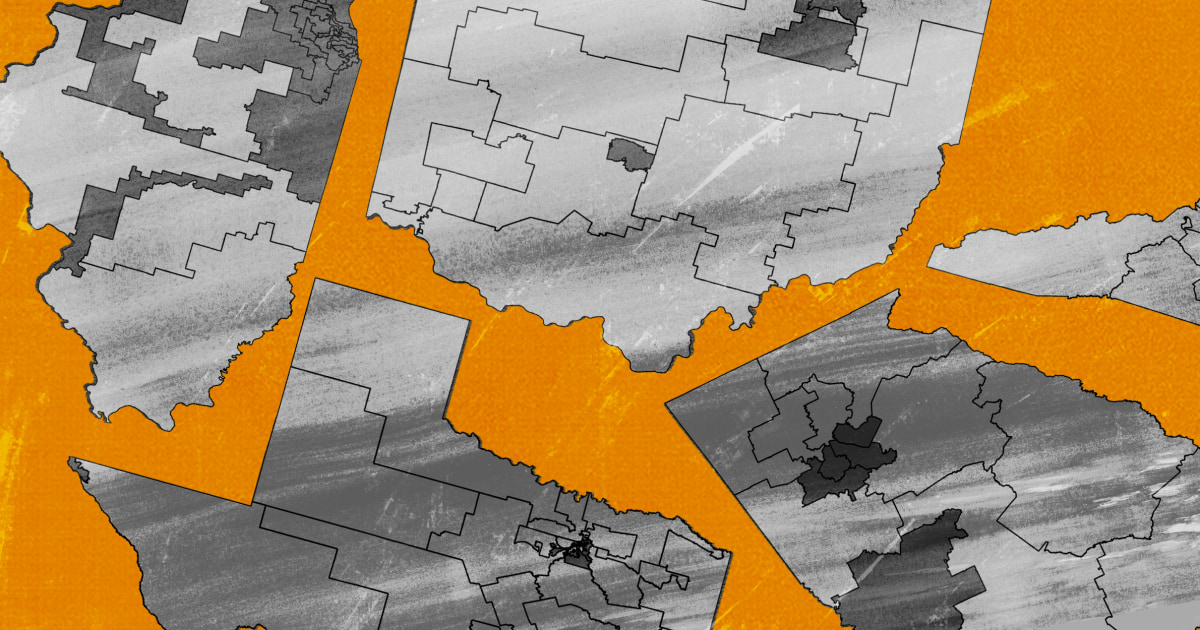
As states across the country draft and enact political boundaries for the next decade, experts say Americans can expect far fewer close, competitive contests.
“Competition is one of the big victims of this round of redistricting,” said Michael Li, a redistricting expert at the Brennan Center for Justice at New York University School of Law, a nonpartisan law and policy organization.
Redistricting is a routine political process, one that’s needed to adjust political lines for population growth and ensure equal representation around the country. But in an increasingly polarized country, the process has become a partisan deathmatch as lawmakers in both parties seek political advantages in many states.
Gerrymandering increases that polarization, too, with lawmakers more regularly chosen in primaries instead of competitive general election contests that incentivize more moderate candidates.
GOP state legislators, who control far more of the redistricting process than Democrats this year, have already started to secure themselves a sizable advantage, but Democrats, who already are expected to face a tough midterm season, are eyeing or enacting some gerrymanders of their own.
Here’s how five states aggressively gerrymandered and who the plans will benefit.
1. North Carolina ignored race data
North Carolina lawmakers spent years defending the last decade’s gerrymandered maps in court, which they freely admitted were partisan gerrymanders; state courts forced them to redraw the Congressional maps in 2016 and 2019, but the Supreme Court ruled in 2019 that federal courts couldn’t police partisan gerrymandering.
By the end of the decade, the redrawn map still appeared to disproportionately boost Republicans: In 2020, Republicans won less than 50 percent of the statewide vote in statewide races, but secured 8 of 13 Congressional seats. Next year, recently enacted maps are expected to extend that advantage, electing 10 Republicans and 4 Democrats in a deeply purple state, according to an analysis of the map by the Princeton Gerrymandering Project, a nonpartisan team of researchers analyzing redistricting maps.
“Their map was taken to the Supreme Court in Rucho because it was one of the worst gerrymanders in the history of our country,” said Doug Spencer, a redistricting expert and a law professor at the University of Colorado, adding that the new maps appear to be an even-worse gerrymander than the one litigated in front of the Supreme Court.
He pointed to the “efficiency gap” metric, a measure of partisan gerrymandering. “The last map that was challenged was 9 percent in favor of Republicans. The current map is 20 percent” in favor of the GOP, he said.
Civil rights advocates including the North Carolina NAACP have already sued the new maps, arguing that the legislature’s decision to draw maps without considering race data violates the Voting Rights Act of 1964, which requires voters not to dilute minority voters.
The map effectively cracks Democrats: Take Guilford County, N.C. for example: the 2019 maps had the entire county — including the majority in one district, which elected Democrat Rep. Kathy Manning in 2020. The new maps split the county into three different Congressional districts, cracking urban residents of Greensboro, N.C. and parts of High Point N.C. to create three safe Republican seats.
Source: | This article originally belongs to Nbcnews.com










